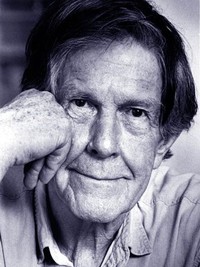John Cage

One of the giants of 20th century music and the international art scene, John Cage began his ventures into the avant-garde as a student of Arnold Schoenberg but soon found even the master's atonalities and use of a twelve-tone scale too conventional for his own ideas. His 1943 concert debut found him using electric buzzers and flowerpots as instruments, but perhaps Cage's most (in)famous piece is "4'33''," which consisted of four minutes and 33 seconds of silence . . . in three movements. For Cage the music came from making people pay attention to room tone and any ambient noises. In finding music everywhere, Cage always placed unique demands upon both his listeners and his musicians. His "Water Music" (1952) featured a pianist pouring water and blowing water whistles and "O'O" consisted of the sounds of vegetable slicing, a blender, and the drinking of the nutritious juice which resulted. Even when Cage allowed artists to use the devices for which they were trained, he put his own unique spin on them. His doctored pianos, with dampers installed to produce a wide range of atonalities, are legendary, and he even composed works which require pianists to slam down their key protectors and opera singers to scream their lungs out. Cage pioneered electronic music as early as 1939 with his "The Imaginary Landscape No. 1" and, heavily influenced by Zen Buddhism and the "I Ching, Book of Changes," introduced the element of chance into his music. Leaving leeway in his compositions as to when given notes would be played (or given sounds would essay forth from radios) Cage insured that each performance would be a unique event. Considering just how important he is in the contemporary musical history, his connections with the worlds of film and TV are regrettably slight. He was the subject of an installment of the PBS documentary series "American Masters" and made sporadic appearances elsewhere, most notably as one of the subjects of the 1991 documentary "Cage/Cunningham."